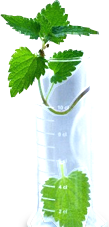



Author(s): Motlhanka D.M.T*
In the present work, fresh fruits (FF),sun dried fruits (SDF), fresh leaves (FL) and sun dried leaves (SDL) of Pseudolachnostylis maprouneifolia var dikindtii were analyzed for total phenolic, total flavonoid content, presence of reducing sugars, proteins and lipids as well as free radical scavenging power. P.maprouneifolia is used as a dry season supplementary feed by livestock farmers in Eastern Botswana. The fruits and leaves of the studied plant tested positive for presence of reducing sugars and proteins. Lipids were detected only in fresh fruit samples. The order of total phenolic content (mg gallic acid equivalents/L) was SDF(1240.3±200.5)>FL(1097.9±154.6)>SDL(952.7±86.8)>FF(838.6±5.7). The order of the flavonoid content (mg Quercetin equivalent/L) was FL(384.9±5.2)>SDL(256.7±3.9)>SDF(159.9±8.3)>FF(139.1±2.6). Sun drying caused an increase in phenolic and flavonoid content in fruits, whilst in leaves the content of both phenols and flavonoids decreased. These changes in polyphenolic contents had no effect on the free radical scavenging potency of the extracts. At all tested concentrations, there was no significant difference between the radical scavenging powers of the fruits. Up to 100µg/ml, the scavenging power of the fruits was (85.6%) higher than that of leaves. Above 100µg/ml, the scavenging power of leaves was (87%) higher than that of the fruits. The current work is the first of its kind, providing new reference data regarding the polyphenolic and antioxidant analysis of this plant. In the light of the obtained result, the present study supports the use of the fruits and leaves of this plant as dry season supplementary feed to livestock. However, further investigations involving nutritional analysis and in vivo studies are required to ascertain the potential of P.maprouneifolia as a candidate for improving livestock health and production in Botswana.